WHAT YOU REALLY NEED TO KNOW
ABOUT COSMETIC SURGERY
Full Text from Dr. Berman's Book
Chapter 9
BLEPHAROPLASTY
(Eyelid tucks)
The eyes and the mouth are the first things we see when we look at each other. With aging, there is a general loss of volume, principally fat, from under the skin, and damage to the skin. This results in the appearance of saggy eyelid skin, bags under the eyelids, and circles or lines around our eyes. Depending upon the skeletal position of the eye, genetics, and various habits, we can expect to find a broad range in the way we age around the eyes.
In the traditional sense, improving the appearance of the eyelids has involved the removal of excess skin and fat from around the eye. Indeed, nearly all writings on blepharoplasty describe the removal of "excess skin, muscle and fat" from around the eyes. Such standard approaches to eyelid surgery may leave the patient looking better, but not necessarily as if they have more youthful looking eyes. If one observes closely, when bags or excess skin is removed, the area around the eye often appears more scooped out or hallow looking. With this in mind, I have evolved my philosophy and approach to improving the aging eyelids (and face - see chapter on Face-Lift).
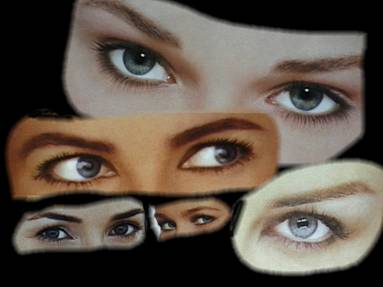
Youthful eyes have no transition zones. The brow is full and there are few shadows around the eye itself. The eyebrow does not have to be positioned high above the eye.
By looking at the real cause for the aging eyelid, I have tailored my operation to include replacing, not just removing, fat from around the brow and the cheek. Combined with some of the more standard surgical approaches, this allows us to soften the contours around the eye and prevent the "skeletonized" appearance. Ideally, the eye should appear as the attracting object not obscured by deep hallows or lines circling around it.
There are several ways to accomplish the goal of improving the eyelids and ultimately the appearance of the eyes. First, in mild conditions of early aging, fat grafting alone may be useful. In some cases, a chemical peel or a laser resurfacing of the eyelids, along with fat-grafting, may do the trick. And of course, in more advanced cases, it is often most expedient to surgically remove excess skin, maybe tightening the saggy lid, and alter fatty bags, as well as fat-graft, in order to achieve optimal results. Indeed, there are times when fat-grafting is not indicated, such as in young people who have congenitally baggy eyelids caused from excess fat. In such cases, the fat can be removed without an incision in the skin. This is commonly referred to as a transconjunctival blepharoplasty. Clearly, the operation is devised on an individual basis.
The operation is performed on an out-patient basis, usually with intravenous sedation and local anesthesia. When the upper eyelid is operated upon, an incision is typically made in the eyelid crease (in the area corresponding to the insertion of the levator muscles). When operating on the lower lid, the incision is either made just under the eyelashes or as noted above, inside the eyelid in the conjunctiva. Fortunately, eyelid scars tend to heal very well and are rarely conspicuous when fully healed. An antibiotic ointment is usually kept continually over the suture line as this helps speed the recovery and optimize the quality of the wound.
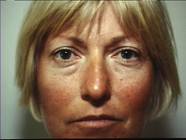
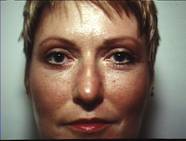
A more traditional upper and lower blepharoplasty, though fat was grafted to the cheeks to keep the lower lids smooth and prevent post-operative circles under the eye.
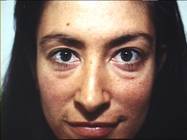
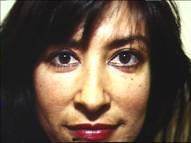
In this case, fat was removed from the lower eyelid through an incision inside the lower lid (transconjuctival). No skin incision was made. Fat was also grafted into the cheeks to keep them full and smooth.
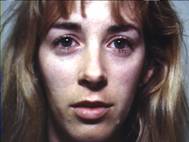

Not discounting that make-up helps, this patient only had fat grafting to the area around her eyes, cheeks and lips. The result provides her with a softer, smoother, more youthful look. Filling out the brow provides a subtle, but effective improvement.

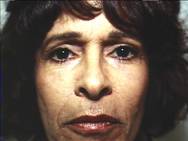
In this patient, the lower lid fat was not removed, but rather freed from the orbital septum and transposed slightly downward over the orbital rim. It serves as an already connected fat-graft. This patient didn't want her upper lids treated with excision of "excess" skin. Fat grafts were used to fill the brow and soften the appearance of the "sagging" upper lid skin. Fat-grafts were also used in the cheeks and lips.
The risks of operating on the eyelids include poor results, (e.g. too much skin resected, or too much fat). There may be bleeding under the skin causing a hematoma. Infection is extremely rare. Blurred vision is generally temporary, though in very rare cases blindness has been reported. The eyes may tear excessively and dry eyes, also, have been reported, though, again, usually temporary.
The procedure is not painful and the recovery is usually quite quick, with suture removal around five days after surgery. Patients can often return to work within a few days. The healing process varies from person to person and according to the nature of the operation. Generally, there is initial swelling and bruising which quickly settles within a week, though it might take longer if one has had previous eyelid surgery.
Often times the area of the suture line will get thicker several days or weeks after surgery. This is normal and the scar thins out as it matures. Often patients worry about redness in the scar. With proper care and avoidance of sun exposure this usually fades away within a few weeks. Stubborn cases may take longer to fade, but this is rarely a problem.
It can not be overstated, the healing process is a dynamic one with many changes going on underneath the skin. It requires some time and therefore patience. Good nutrition and proper wound care help to achieve optimal results.